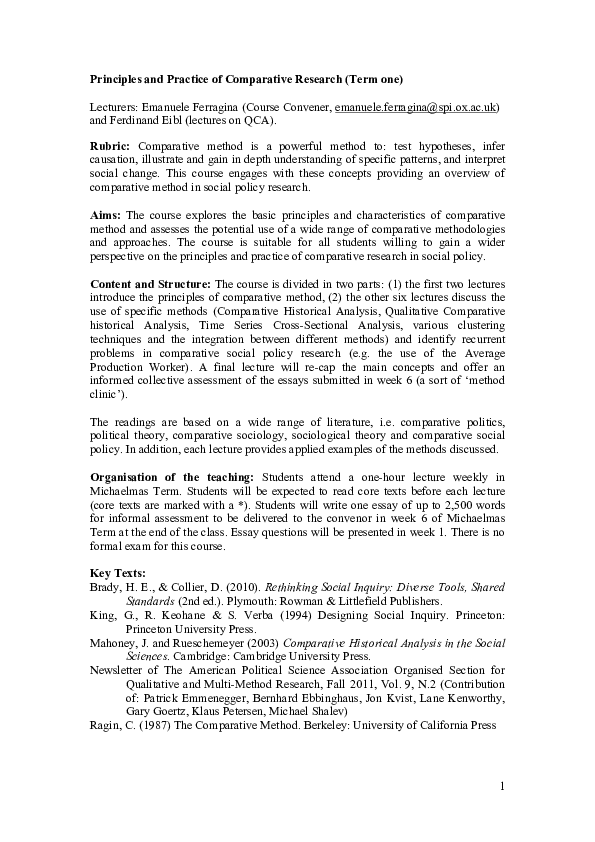If you’re trying to figure out how to write a comparative research paper, you’ve come to the right place. Here, you’ll learn about the Structure of such an essay, the Grounds for comparison, and how to find the points of comparison. After you know what makes a good comparative essay, you’ll be ready to begin writing! Keep reading for some helpful tips! You’ll be on your way to writing an outstanding paper in no time.
Structure of a comparative research paper
A good comparative research paper has a clear structure. The first paragraph starts with a topic sentence, the middle paragraph presents the information, and the last paragraph draws a low-level conclusion. While it may seem like the conclusion paragraph should make the most general point, the essay’s final paragraph should be specific and make a point. For most papers, a structure is the key to a good paper.
Regardless of the purpose, an effective comparative essay must have a logical organization. The comparisons should flow from one point to the next without confusing the reader. For example, a comparative essay on French and Russian revolutions would compare innovations in new technology, military strategy, and the administrative system. There are other ways to structure a comparative essay. To write an effective essay, follow the suggested structure.
Grounds for comparison in a comparative essay
Comparative essays require the writer to compare two items or axes. While it is possible to compare more than two items, the comparison has to be interesting and compelling. In order to succeed at this, you should make sure that your subjects differ enough from one another to make the comparison worthwhile. Here are some tips to help you create a compelling comparative essay. The purpose of a comparative essay is to show the reader something about the world around us that is interesting and different.
While writing a comparative essay, the most important thing to remember is to keep the flow of your writing logical. Do not make random comparisons between items. They will end up confusing the reader and losing their interest in the essay. To keep your essay organized, you can use two different formats: comparative and non-comparative essays. Each of them has different advantages and disadvantages and can be compared.
Tables
The proper use of tables and graphs is essential to the overall impact of a comparative research paper. Tables and graphs are crucial to the presentation of research results because they summarize data collected by a researcher. Properly prepared tables and graphs enable researchers to present a wide range of information about many individuals and groups, making their findings more appealing and easy to understand. Tables and graphs are essential tools of the scientific research process, and authors of research papers must master the art of table and graph creation. Listed below are some guidelines for table preparation.
Use descriptive titles for each table and graph. Repetition in tables and figures can hinder communication. Make sure to include only those that highlight the most important findings in each category. Do not repeat exact values. This defeats the purpose of the table. Use descriptive titles instead. Make sure to leave plenty of room between columns and graphs. Avoid overlapping columns, too. Moreover, use subheadings to make the information more accessible.
Finding points of comparison in a comparative essay
There are many different ways to find points of comparison in a comparative essay, and it is important to follow a systematic approach to comparing things. Once you have decided which two subjects you’ll be comparing, you must carefully select your parameters and items to evaluate. Be sure to address each one of these combinations in turn to ensure that the comparative essay makes a valid comparison. The following tips will help you to write a more effective comparative essay.
Identifying the subjects of comparison in a comparative essay is critical to the overall success of the paper. The best comparative essays are based on two axes that are related in some way, whether they’re different in size, form, or function. Once you’ve defined your points of comparison, you can then begin developing your argument. A good comparison should include one or two aspects of each subject, rather than comparing the two topics comprehensively. However, research is not necessary for every assignment. Historical events, science-related topics, and social issues may require research, while comparative essays about literature are less likely to need it.
Developing a thesis
Developing a thesis for a comparativa research paper involves the process of determining which topic or topics to discuss. The paper should follow the order of the questions and present the student’s best thinking on the subject matter. The student should base the paper response on research and course material to ensure that it is clear and reflects their own thought process. The paper will get more complex and sophisticated as the paper progresses.
When composing a comparative essay, the thesis must express the writer’s perspective on the topic. To do this, the introduction of the essay should include a thesis statement. This statement sums up the comparison between two different objects and presents the writer’s point of view. For example, a greenhouse rose purchased from a florist is likely to be more appealing than a rose from a garden. The writer will then prove his thesis in the body of the paper.




